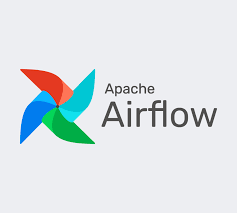Explore Our Top AI Programs
No courses found for "Most Popular"
Try selecting a different category
Unlock Your AI Career Potential

AI & ML Expert-Led Learning
- Learn from AI & ML Experts
- Real-world AI Projects & Case Studies
- Live AI Hackathons & Peer Learning

24/7 AI & Data Support
- Dedicated AI Learning Managers
- 24*7 AI & Data Support
- Network with AI Leaders & Peers

AI Career Development
- AI Resume & Interview Prep
- Access to AI Learning Hub
- Strong AI Industry Connections
Transform Your Career with AI & Tech Skills
Explore Your Learning Path
Select an option from the left to discover personalized learning opportunities and career growth pathways.
Events
Explore our latest events, workshops, and webinars. Join us to connect, learn, and grow with industry experts and peers.
Transforming careers through AI & data training
Through comprehensive AI and data training programs, we've helped thousands of professionals master AI/ML, data analytics, Python, and cloud technologies, transforming their careers with cutting-edge AI expertise.
Read the full story
Datavalley.ai news
Corporate Training
Ready to Upgrade Your Team AI & Data Skills?
Datavalley.ai offers world-class corporate training programs designed for young professionals seeking to advance their careers. Our comprehensive curriculum includes live interactive sessions, real-world project experience, and industry-recognized certifications in Data Science, AI, and Machine Learning.
Affiliate Program
Join Our Education Network
Datavalley.ai offers comprehensive affiliate opportunities for education professionals and industry experts. Join our network to promote our world-class Data Science, AI, and Machine Learning programs. Help students access our live classes, hands-on projects, and industry certifications.
Technologies & Tools


.avif&w=256&q=100)
























.avif&w=256&q=100)






















The Datavalley Story
Since 2020, we have shaped and pioneered the edtech sector. Today, we have evolved into the essential, educational backbone for our students, still at the forefront of AI and Data Science education.
READ MORE ABOUT US
Let's get you to the right place

Self-Paced AI Learning
Learn AI at your own pace with our comprehensive online AI courses, hands-on AI projects, and real-world AI labs

Live AI Instructor-Led Training
Join our scheduled live AI sessions with expert AI instructors, interactive discussions, and peer learning

Corporate AI Training Solutions
Tailored AI training programs designed specifically for your organization's AI needs and delivered exclusively to your teams
Join a company where
learning transforms lives
We're Datavalley.ai, a leading edtech platform that helps professionals upskill their careers with world-class pedagogy, 24x7 support, and hands-on learning. Here, we've created a community where 25,000+ active students learn from industry experts and achieve their dream jobs at top companies like Amazon, Apple, and Deloitte.
EXPLORE COURSES AT DATAVALLEY
Everything you're wondering about
Ready To TransformHow Your Teams Learn?
Unlock learning subscription with live classes for digital skills

















































